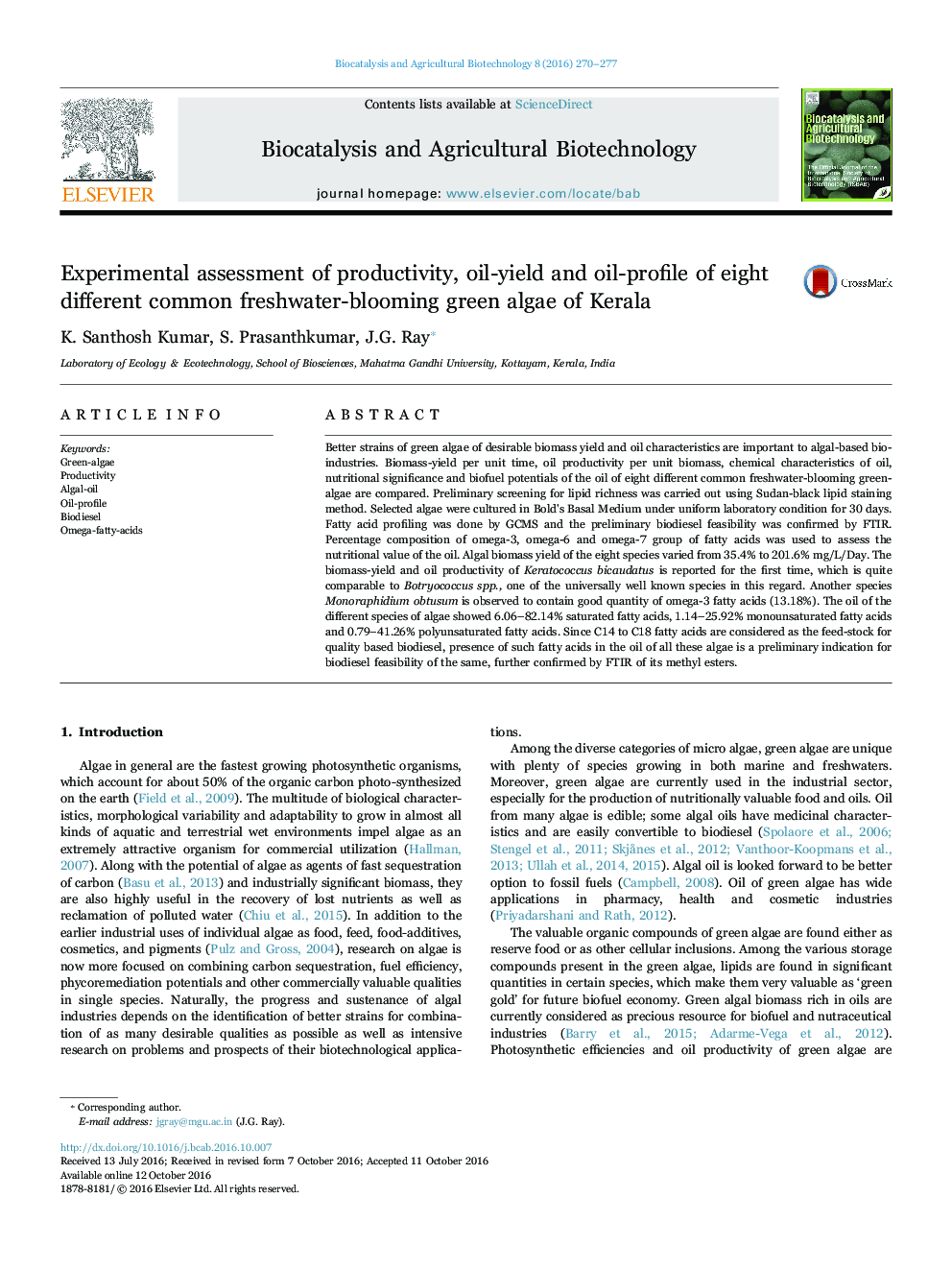| Article ID | Journal | Published Year | Pages | File Type |
|---|---|---|---|---|
| 8406308 | Biocatalysis and Agricultural Biotechnology | 2016 | 8 Pages |
Abstract
Better strains of green algae of desirable biomass yield and oil characteristics are important to algal-based bio-industries. Biomass-yield per unit time, oil productivity per unit biomass, chemical characteristics of oil, nutritional significance and biofuel potentials of the oil of eight different common freshwater-blooming green-algae are compared. Preliminary screening for lipid richness was carried out using Sudan-black lipid staining method. Selected algae were cultured in Bold's Basal Medium under uniform laboratory condition for 30 days. Fatty acid profiling was done by GCMS and the preliminary biodiesel feasibility was confirmed by FTIR. Percentage composition of omega-3, omega-6 and omega-7 group of fatty acids was used to assess the nutritional value of the oil. Algal biomass yield of the eight species varied from 35.4% to 201.6%Â mg/L/Day. The biomass-yield and oil productivity of Keratococcus bicaudatus is reported for the first time, which is quite comparable to Botryococcus spp., one of the universally well known species in this regard. Another species Monoraphidium obtusum is observed to contain good quantity of omega-3 fatty acids (13.18%). The oil of the different species of algae showed 6.06-82.14% saturated fatty acids, 1.14-25.92% monounsaturated fatty acids and 0.79-41.26% polyunsaturated fatty acids. Since C14 to C18 fatty acids are considered as the feed-stock for quality based biodiesel, presence of such fatty acids in the oil of all these algae is a preliminary indication for biodiesel feasibility of the same, further confirmed by FTIR of its methyl esters.
Keywords
Related Topics
Life Sciences
Agricultural and Biological Sciences
Agricultural and Biological Sciences (General)
Authors
K. Santhosh Kumar, S. Prasanthkumar, J.G. Ray,
